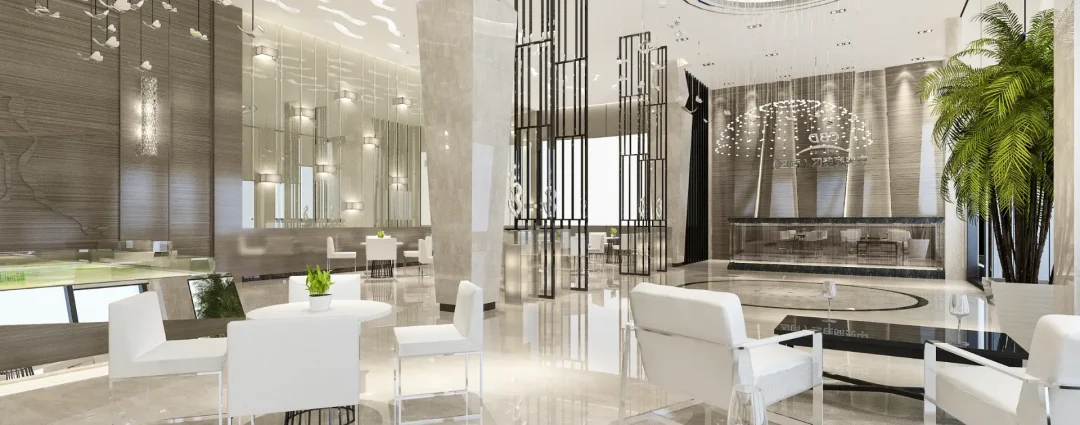Top 5 Website Design Trends for Hotels in 2024

As the hospitality industry becomes more competitive, having a well-designed website is essential for hotels looking to stand out and attract guests. In 2024, several emerging trends are shaping how hotel websites are designed, with a focus on creating a seamless, immersive experience for users. Below are the top five website design trends that are transforming hotel websites this year.
1. Immersive Visuals and Storytelling
Why It Matters: In the context of the Top 5 Website Design Trends for Hotels in 2024, immersive visuals and storytelling have taken center stage. High-quality imagery and videos are no longer just about showing off the hotel’s amenities; they are now tools for telling a compelling story. This trend focuses on creating an emotional connection with potential guests by visually conveying the unique atmosphere and experiences that the hotel offers.
How to Implement:
- 360-Degree Virtual Tours: Provide an immersive experience by allowing visitors to virtually explore the hotel. This could include interactive room tours, walkthroughs of amenities, and even views of the local surroundings.
- Hero Videos: Replace static hero images with engaging short videos on the homepage that highlight key aspects of the hotel, such as luxurious rooms, dining options, and scenic environments.
- Cohesive Visual Theme: Ensure all visual elements, including color schemes and fonts, are consistent with the hotel’s brand identity and the experiences it promotes.
2. AI-Driven Personalization
Why It Matters: Personalization is no longer a luxury; it’s a necessity. In 2024, AI-driven personalization tools are becoming more sophisticated, allowing hotel websites to offer a tailored experience to each visitor. By analyzing user behavior and preferences, these tools can recommend relevant content, offers, and services, increasing the likelihood of conversion.
How to Implement:
- Dynamic Content: Use AI to dynamically adjust the content displayed to users based on their past interactions with the site, location, or preferences. For example, returning visitors might see personalized welcome messages or tailored offers.
- Chatbots with AI: Integrate AI-powered chatbots that can answer frequently asked questions, assist with bookings, and provide personalized recommendations based on user queries and behavior.
- Predictive Analytics: Utilize AI to predict what services or features a visitor might be interested in, such as suggesting a room upgrade or an additional service based on their previous bookings or browsing history.
3. Mobile-First Design
Why It Matters: Among the Top 5 Website Design Trends for Hotels in 2024, mobile-first design is paramount due to the increasing number of travelers using mobile devices to research and book accommodations. In 2024, it’s not just about making hotel websites look good on mobile but optimizing them for performance, speed, and user-friendliness.
How to Implement:
- Responsive Design: Ensure the website is fully responsive, adapting seamlessly to any screen size, whether on smartphones, tablets, or desktops, providing a consistent experience.
- Fast Load Times: Optimize all elements, including images and scripts, to guarantee quick load times on mobile devices. Slow-loading websites can lead to higher bounce rates and lost bookings.
- Simplified Navigation: Focus on creating intuitive navigation for mobile users with accessible menus, clear call-to-action buttons, and layouts that allow easy booking on the go.

4. Sustainable Design Elements
Why It Matters: Sustainability is increasingly important to travelers, and hotels that showcase their commitment to environmental responsibility can appeal to this growing market segment. In 2024, sustainable design elements in hotel websites go beyond highlighting green practices—they are integrated into the overall design and user experience.
How to Implement:
- Eco-Friendly Aesthetics: Use natural colors, materials, and imagery that reflect the hotel’s commitment to sustainability. This could include showcasing eco-friendly features such as solar panels, organic toiletries, or sustainable dining options.
- Highlight Green Initiatives: Dedicate a section of the website to the hotel’s sustainability practices. Include information on energy conservation, waste reduction, and partnerships with local, eco-friendly businesses.
- Paperless Booking: Promote paperless processes by offering digital receipts, confirmations, and check-ins, reducing the environmental impact and appealing to eco-conscious guests.
5. Enhanced Security Features
Why It Matters: With cyber threats on the rise, online security is a top priority for travelers, especially when making transactions or sharing personal information online. In 2024, hotel websites are focusing on robust security features to protect their guests and build trust.
How to Implement:
- SSL Certificates: Ensure that your website is secured with SSL (Secure Sockets Layer) certificates, which encrypt data transmitted between the user and the server. This is especially important for pages where personal information or payment details are entered.
- Two-Factor Authentication (2FA): Implement 2FA for guests who create accounts or make bookings on your website. This extra layer of security can prevent unauthorized access.
- Privacy Policy Transparency: Clearly communicate your privacy policy, explaining how user data is collected, stored, and used. Transparency in data handling builds trust with potential guests.
Conclusion
In 2024, hotel websites are not just a digital brochure; they are an extension of the guest experience. By embracing these top website design trends—immersive visuals, AI-driven personalization, mobile-first design, sustainable elements, and enhanced security—hotels can create engaging, trustworthy, and effective websites that resonate with modern travelers. As the digital landscape evolves, staying ahead of these trends will be key to attracting and retaining guests in an increasingly competitive market.



